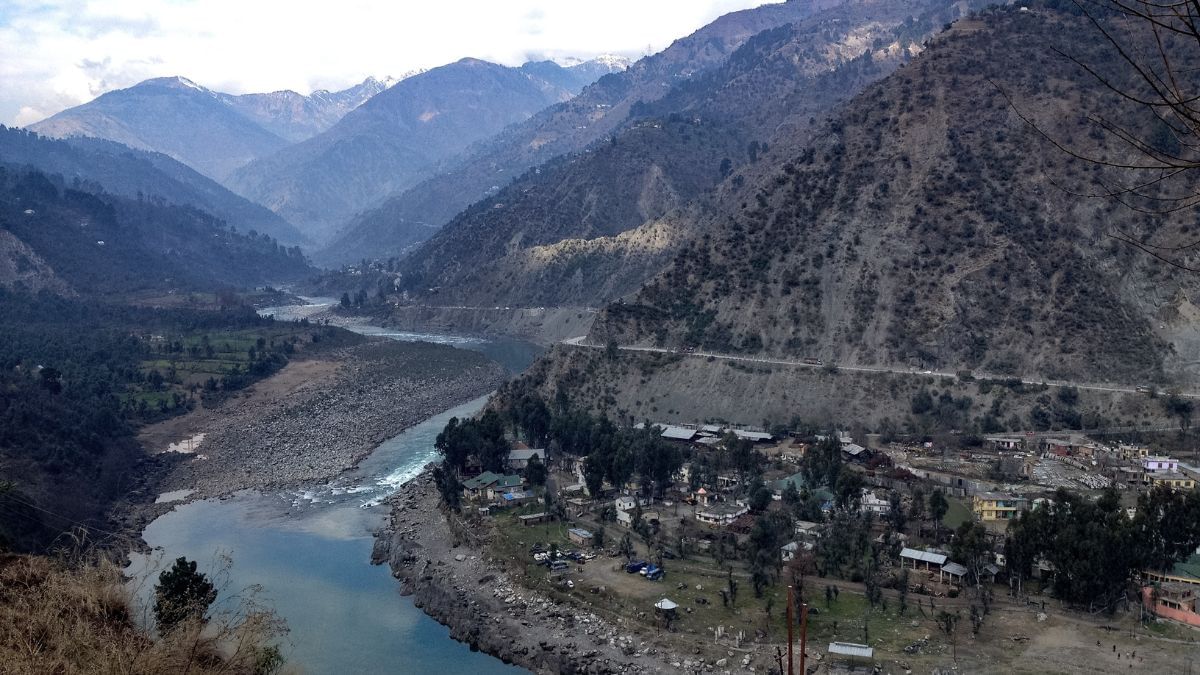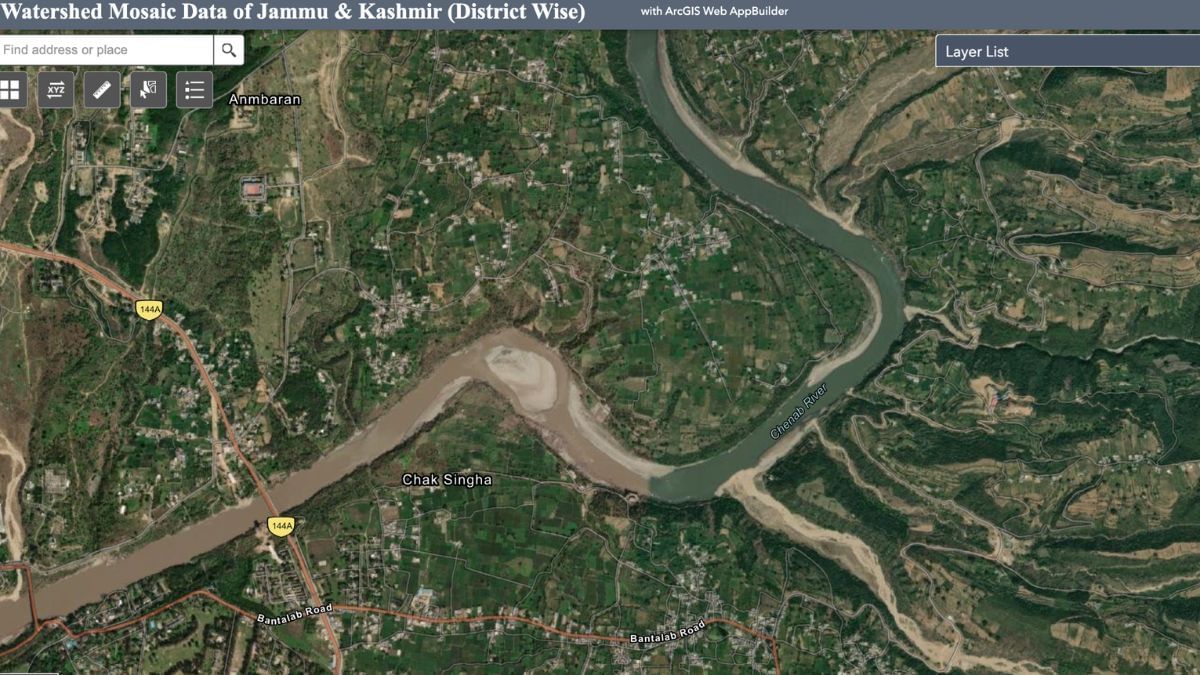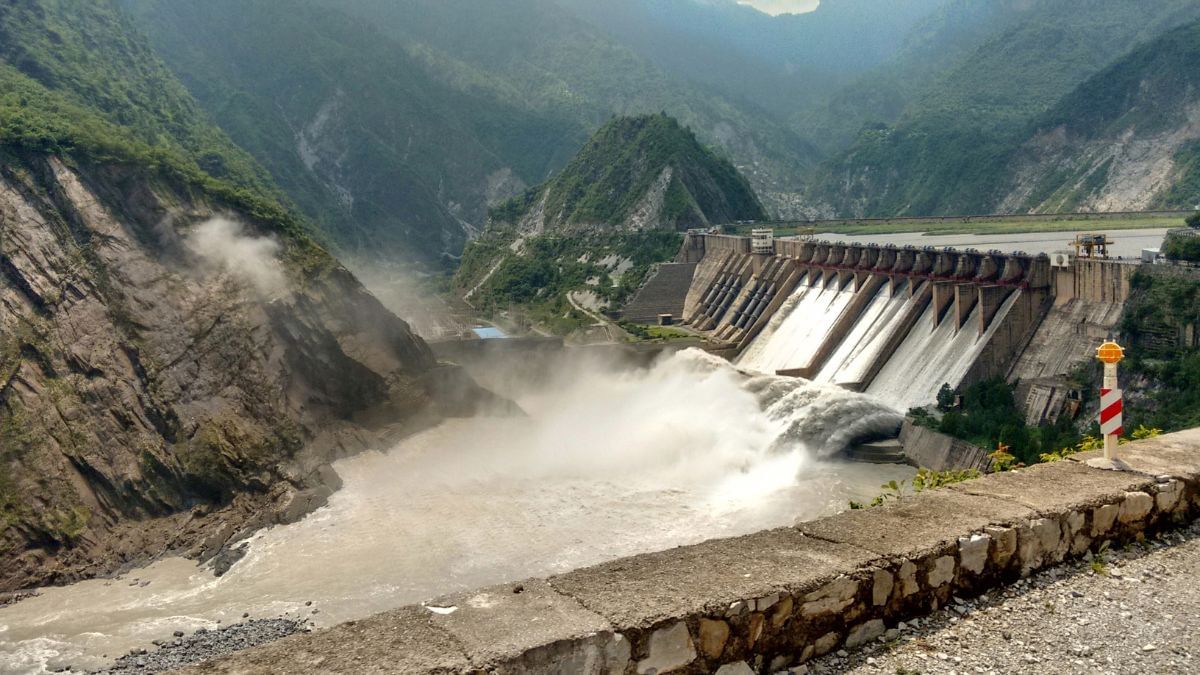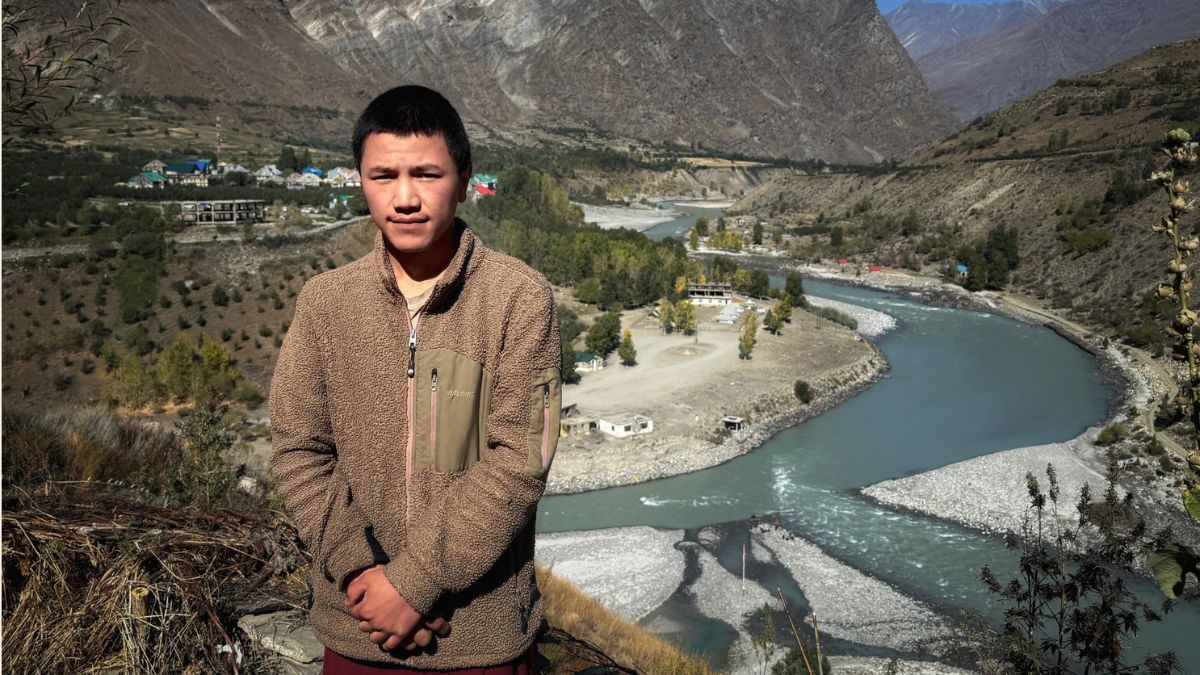New Delhi: The river of love, Chenab, has many names in the subcontinent—the restless river, the wild river. It is the backdrop of tragic love stories like Heer Ranjha and Sohni Mahiwal, and the centre of a geo-political tussle between India and Pakistan. But Chenab’s real story lies in the pages of geological surveys and studies conducted across the border—it is the river that just cannot be contained.
And this year, it reached Jammu and caused havoc.
All the Indus basin rivers roared and surged this monsoon on both sides of the border. While the eastern Indus rivers of Beas, Ravi and Sutlej brought misery to Himachal Pradesh and Punjab, floods in the Chenab basin and tributaries like Tawi are becoming a growing worry for local people and experts alike.
As a Himalayan river, it produces one of the world’s highest silt levels, making any construction on the river fragile. The few dams India has managed to build on the Chenab have to be flushed yearly to keep the silt from ruining them. Unlike Jhelum or Sutlej, which are somewhat subdued as they pass through cities, Chenab cuts a lonely path in India’s Himachal Pradesh and Jammu & Kashmir across barren slopes, snow-laden mountains and glaciers, making it one of the fiercest and strongest Indus rivers.
“Chenab is the only Himalayan river that has the potential to be saved—humans have eaten up every other,” said Parineeta Dandekar, associate coordinator at South Asia Network on Dams, Rivers and People (SANDRP). “In parts of Himachal where the Beas and Ravi have been reduced to mere streams, we still see Chenab flow in all its glory.”

Chenab is now on its way to becoming the most-dammed river in the Indus Valley. Fed by glacier melt-off, Chenab’s Indian segment is as long as the entire length of the Beas. Its hydropower ‘potential’ of over 15,000 MW is still untapped according to Indian government surveys. But after the Pahalgam terrorist attack and the suspension of the Indus Waters Treaty in April 2025, India went on a spree of clearing hydroelectric projects on the river.
“Until now we weren’t even taking our rightful share of Chenab’s water, which was due to us under the Indus Waters Treaty,” said Anmol Ohri, a climate activist based in Jammu. “The spate of projects after IWT was suspended isn’t new, it has been a long time coming.”
However, these projects, along with increasing encroachments on tributaries like the Tawi, the eternal siltation problem, and newer threats of glacial lake outburst floods (GLOFs), spell disaster for the Chenab. Excessive floods in the Tawi and landslides and flash floods along Chenab’s tributaries in Kashmir are symptoms of the larger problem. The problems created by million-year-old geographies are catching up at a million miles per hour, and for local people who live on its banks, Chenab seems to be changing its colours every day.
For a river that holds immense cultural significance for its people, these are red flags to be addressed immediately.
“The song Paar Chanaa De is an old folk song that is still sung on both sides of the border, and that alone is enough to signify the historical importance of the Chenab river,” said Ohri. “Kings, countries, boundaries may have changed, but the river stayed the same. We must ensure it keeps on flowing.”
Also read: Sikkim’s war on GLOF. Monks, shamans, and scientists are all in the fight
Chenab’s silt problem
An aerial view of the Chenab basin in India shows a greenish-blue snake-like, curvy stream that first moves uphill, then downhill, and is joined by multiple smaller streams. It is a seventh-order catchment, meaning it is a mature river system with many major tributaries. It begins with the confluence of the Chandra and Bhaga rivers in Himachal Pradesh’s Lahaul valley to form Chandrabhaga. Literally translating to the ‘Crescent Moon’ river, the Chandrabhaga is the source of many folktales and mythologies in every religion, not just Hinduism. While the river finds a mention as Asikni in the Rig Veda, the structure formed by Chandra and Bhaga rivers in the hills is considered sacred as a Buddhist ‘mandala’.
After passing through HP’s Chamba, it then enters J&K through the Padar Valley and traverses through Doda, Kishtwar, Jammu and Akhnoor districts before leaving India for Pakistan. As the river exits India at Akhnoor, a Hindu temple, a Sufi dargah, and a Sikh gurudwara sit on its banks.
GIS images accessed by ThePrint show Chenab turning a murky brown near the Akhnoor region, true to the river’s ancient Vedic name Asikni which means ‘dark-coloured.’

According to the head of Jammu University’s Remote Sensing department, AS Jasrotia, who built the GIS platform, the reason for this murky hue could be monsoon runoff.
“Most of these satellite images are between six months to a year old, and the river’s heavy erosion during the monsoon is well known,” said Jasrotia.
The Chenab river also carries more silt than other rivers in the Himalayas, including the Ganga.
And this problem of silt isn’t seasonal. Geological studies since the 1990s have shown that soil erosion in the Chenab is higher than other Himalayan rivers, making mega construction projects risky.
In fact, a 2016 study estimated that the Chenab river near Salal dam carries over 48 million metric tonnes of sediment every year—while there aren’t exact comparisons, one study pegs Sutlej’s sediment load at only 0.4 million metric tonnes a year. The reason is connected to the geological history of the Himalayas and the geopolitical history of the Indus Water Treaty.
It has long been known that the Himalayan rivers have a penchant for heavy soil erosion and sediment collection, and this is mainly because of the nature of the Himalayan mountains themselves. Over 50 million years old, these mountains are ‘young’ in geological terms and are seen as very tectonically active. They are still rising taller, thus the land is very unsteady and fragile, increasing silt production and soil erosion.
Another reason, more specific to Chenab, is its lack of forests and trees. According to a report on the Chenab prepared by the Himalayan Forest Research Institute (HFRI) in 2022, there is very little vegetation in the upper reaches of the Chenab basin.
“The Chenab River Basin is characterised by the uplands, undulating ridges, valleys, gravels, hills, hillocks and rocky outcrops,” read the report. “The forest cover in the high altitude areas is sparse, due to which runoff water causes high siltation in the river.”
In the past century, the Indus Water Treaty has shaped the Chenab’s trajectory and health. Because of the division of Himalayan rivers, Chenab is officially given to Pakistan, but India can still use its waters for ‘non consumptive’ purposes like constructing small, run-of-the-river dams.

Even these dams—such as the Salal dam in Reasi, the Baglihar dam in Ramban, and the Dul Hasti dam in Kishtwar districts of J&K—are heavily impacted by silt.
In fact, the 690 MW Salal has to be shut every year for regular flushing of the silt that accumulates in its basin. Studies have shown that within the first few years of building the Salal dam, its turbines and other equipment got damaged due to silt accumulation.
“None of these dams are meant for storage; they are just for hydropower. Since it’s not allowed in the IWT, we’ve never built major storage in Chenab,” explained Ashwin Pandya, Secretary General of the International Commission on Irrigation and Drainage.
The IWT’s clause, which prevents the building of huge reservoirs, has unintentionally benefited the health of the river.
High silt basically raises the riverbed level, which leads to water straying away from the main channel during floods. These factors make the Chenab all the more prone to flooding, even in upstream regions.

During this year’s monsoon, Dharali wasn’t the only Himalayan disaster. Flash floods in the Miyar nallah on 30 July, a Chenab tributary in Himachal, brought down so much silt and sediment that it devastated the entire valley. According to Dandekar, these occurrences are almost routine across the Chenab basin and highlight its fragility.
“Despite this, there are over 44 different dam projects that are currently planned or under construction in the Chenab in both Himachal and J&K,” said Dandekar. “This isn’t just environmentally unsafe; it is also a bad investment decision because of the fragility of the landscape.”
Also read: Beas River used to be tame. Why it is turning angry now
Glacier melt-off problem
The challenges facing the Chenab River don’t just begin with silt accumulation, but go right to its source—glaciers. Scientists have been warning for decades that the glaciers that make up these rivers are retreating fast, and this has two major impacts—one is changes in the size of the river itself, and two is the increase of GLOF events.
In the snow-covered peaks of Himachal’s Lahaul and Spiti district from where the Chenab originates, sits a ticking time-bomb—the Samudra Tapu glacial lake.
The lake feeds the Chandra river, and has been observed and mapped for years by scientists, because it has increased in size by 905 per cent since 1965. Given its location and the silt accumulation nearby, experts are all but certain that it will burst and lead to a catastrophic flood in the villages downstream. It’s another Sikkim waiting to happen. And to make matters worse, there is a hydropower project being planned 45 kms from the lake in Chhatru village.
While Samudra Tapu is the biggest glacial lake, others like Bara Shingri, Ghepan Gath have also been expanding in size, not to mention the hundreds of smaller lakes that have emerged due to melting glaciers.
“The glacial lakes in Chenab basin are basically ticking time bombs. Both Chandra and Bhaga rivers originate near glaciers, and the number of lakes have increased in size over time,” said Dandekar.
Just the Chandra basin itself, according to a 2019 study, has over 200 glaciers and these are expected to shrink to half their size by 2100.

“It is a very logical thing that when glaciers melt—due to climate change or other reasons—the water has to pool somewhere. That is how these lakes form,” explained Pandya. “But they’re not permanent structures and sometime or the other these temporary pools burst the natural dams and unleash a flood of water.”
Dandekar’s organisation SANDRP, has collected information from scientists as well as field surveys through the Chenab basin to explain these challenges. Their conclusions are resolute: Large construction projects in areas that are ‘seismically active’, and see ‘routine, crippling climate disasters’ need extremely attentive planning and detail, not to mention proper democratic process and approvals from local people.
Also read: Ending Indus treaty may hurt Pakistan’s poor, but it’ll also unite it with anti-India hatred
Chenab’s significance
In folklore, each of the five Himalayan rivers is given a quality attached to it: valour, honour, faith. For Chenab, that quality is love. The famous Punjabi love story of Sohni Mahiwal starts and ends with the Chenab River.
“Chenab ishqiyaan,” said Dandekar. “Chenab has always been the river of love. It unites not only Heer Ranjha and Sohni Mahiwal, but also unites religions across the borders.”
For the people who live near the river, it serves huge cultural and practical importance. Its waters help irrigate a large part of the plains in Jammu, through important, pre-Independence canals like the Ranbir Canal, which India plans to expand after the suspension of the Indus Waters Treaty. Additionally, the tributaries that feed Chenab serve as the lifeline of cities like Jammu, and encroachments on them also pose a threat to the overall health of the Chenab.
“See, a river is made up of its watershed. You can’t just look at the main stream, you have to look at all the channels and tributaries that feed it to understand the health of the river,” said Dandekar. “So if there are encroachments, GLOFs, retreating glaciers or silt accumulation in any Chenab basin rivers, it will impact Chenab eventually.”
The Tawi Riverfront Development Project is one such example of a project on a Chenab tributary. The Rs 530 crore project has been delayed since 2006 and has raked up both environmental and capital losses. With plans to make walkways, parks, jogging tracks and plazas on the Tawi floodplains, the project has invited the ire of environmentalists who caution against building on such ecologically sensitive areas.
Now, even the local residents are able to join the dots. Arti Kumari, a 23-year-old student who has lived in Jammu next to the Tawi her whole life, recalled how the Tawi’s water was clean enough to drink out of. Now, with routine dumping of construction waste and construction on the riverbed itself, the murky brown colour is a standard view from her house’s yard.
The riverfront project is also slowly making the river’s stream smaller, she mentioned. Her elders have told her that this is the reason for the increased floods.
“When it rains and there is a lot of water, we need to give space for the flood water to go somewhere,” said Kumari. “If we keep shrinking its bed, it will definitely enter our houses and banks. How can we call it an angry river, it’s not the river’s fault.”
This is the second story in the three-part series Angry Rivers.
(Edited by Theres Sudeep)






